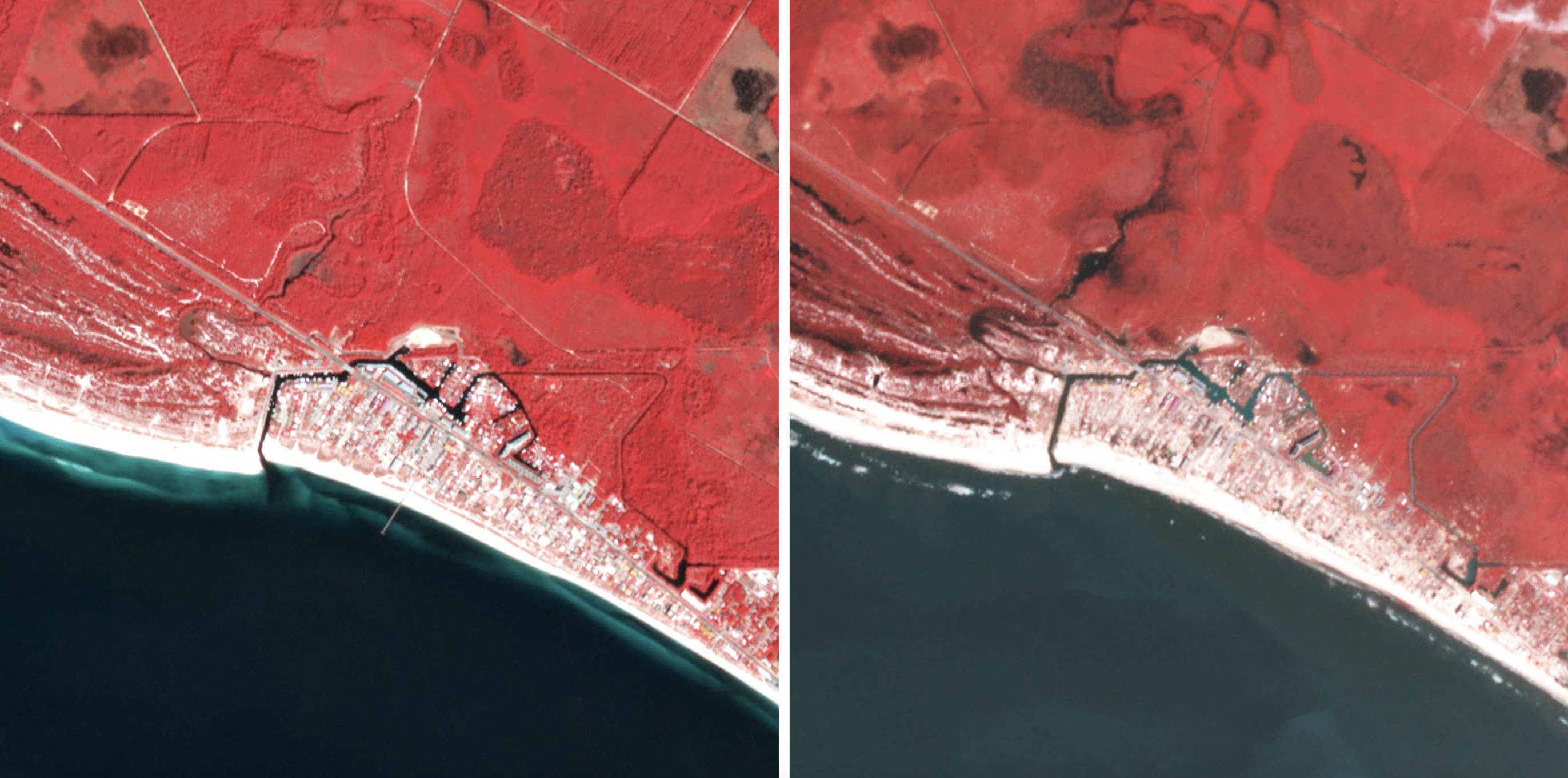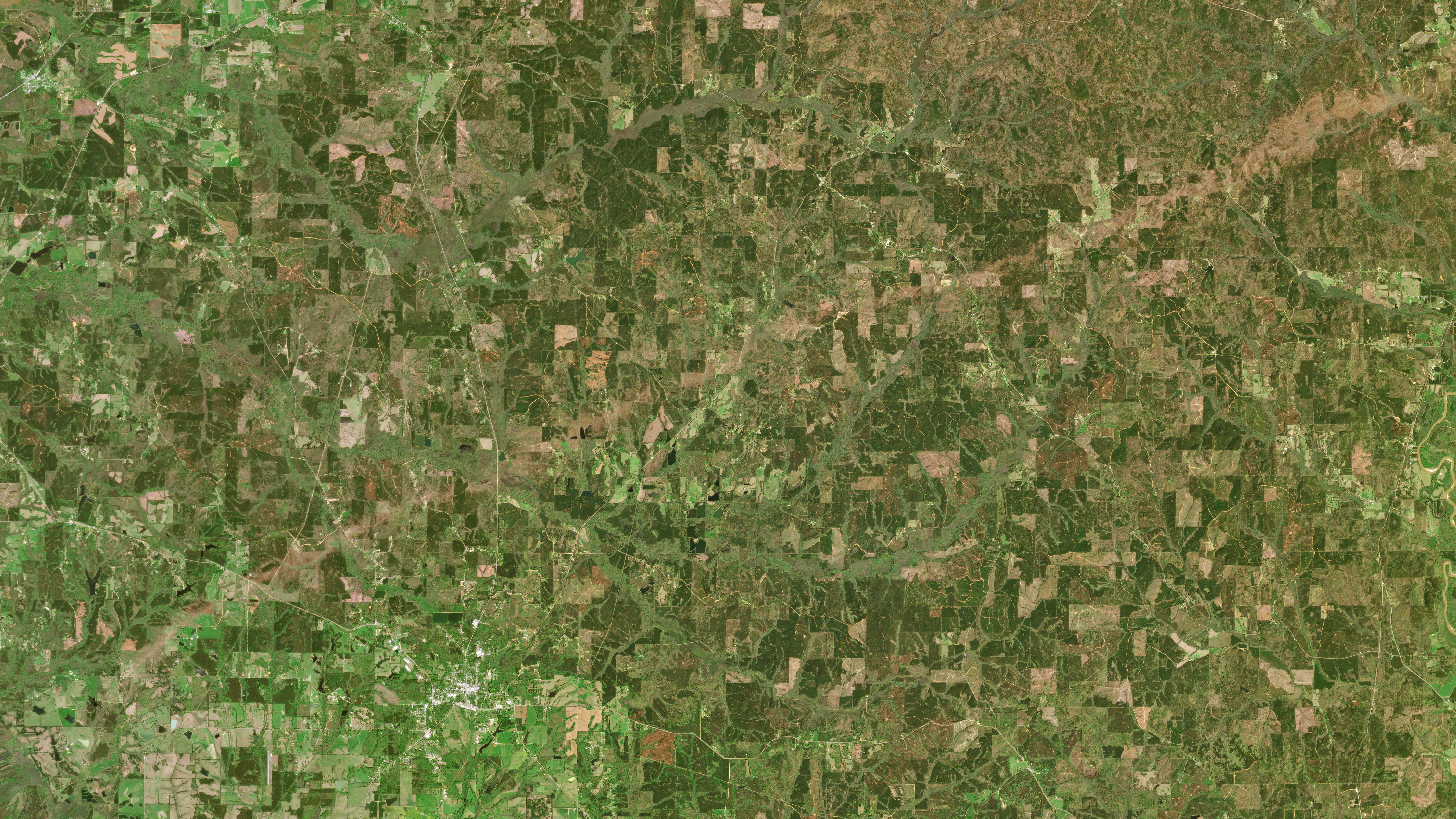Planet and New Light Technologies Deliver Satellite Imagery to Power Rapid Disaster Response at FEMA
Emergency managers require up-to-date information throughout the lifecycle of an incident on the conditions of impacted communities in order to make decisions about where and how to respond. Planet’s high-cadence and high-resolution satellite monitoring capabilities and image archive provide ongoing regional coverage, enabling disaster risk mitigation, rapid response, and informed recovery.
Our data is now being used through a collaboration with New Light Technologies Inc. (NLT) to provide the Federal Emergency Management Agency (FEMA) imagery to support enhanced situational awareness for effective disaster response.
Through this collaboration, NLT, a renowned leader in the development of satellite-derived analytics and delivery of real-time decision-support systems for emergency management, works directly with FEMA to integrate our near-daily PlanetScope imagery into its disaster response program to assess damages and plan recovery following incidents such as hurricanes and tornadoes. Working together, Planet and NLT rapidly deliver imagery through API and cloud-based platforms to streamline data access and integration with disaster response systems and commercial software platforms such as ESRI and Google Earth Engine.
“We are happy to be partnering with New Light Technologies and FEMA to provide critical information for natural disaster response and resilience efforts,” said Nelson Imade, Planet Federal Account Executive. “Our satellites keep a watchful eye over our planet, equipping our partners to be able to respond to and prepare for disasters more quickly, helping to save lives and mitigate economic impact.”
Hurricane Damage Assessment

These two false color PlanetScope images show the direct aftermath of Hurricane Michael on the coastal community of Mexico Beach, Florida. In the second image, taken on October 11, 2018, the day after the hurricane made landfall it is possible to see large areas of damage and inland flooding throughout the community.

This true color SkySat image, taken on October 17, 2018, shows the extent of the destruction.
The NLT team utilized PlanetScope to evaluate predictive deep learning models of tornado damage, examine the impacts of the New Waverly floods in Texas, and conduct visual assessments of infrastructure damage caused by winter storms. Our SkySat satellites have also been employed by FEMA on a tasking basis to gain enhanced high-resolution insights to complement the near-daily datasets. This advanced visual coverage supports the organization’s ability to keep impacted communities safe and informed.
Planet’s data is particularly useful for disaster management as evaluators can gain a before-and-after look at key regions within 24 hours of catastrophic events and effectively target relief efforts. Through our archive imagery dating back to 2009, this time series data also supports FEMA’s ability to mitigate risk and plan for climate resilience and adaptation, revealing regional patterns and global change.
Tornado Path Mapping


These two true color PlanetScope images show the damage caused by the longest tornado to touch down during a storm on the night of March 25, 2020 in central Alabama. This tornado, an EF3, left a path of damage that was 80 miles long.
Our data has supported a number of other disaster response initiatives ranging from preventative research to rapid relief. Through Planet’s Education and Research Program, scientists utilized PlanetScope data to create predictive tools monitoring earthquakes and landslides in the Himalayas, and by pulling our data just hours after the Chamoli landslide, researchers were able to understand how the event occurred. In 2018, the World Food Programme and the Republic of the Congo leveraged Planet’s data to create the Cloud to Street flood mapping and response organization. In collaboration with NASA Harvest, our data also supported rapid food and agriculture response in Togo as COVID-19 disrupted food security.
Serving FEMA aligns with Planet’s continued growth and long-term mission to support global communities by revealing near-daily global change. Earlier this year, Planet entered into a definitive merger agreement with dMY Technology Group, Inc. IV (NYSE:DMYQ), a special purpose acquisition company, to become a publicly-traded company. As we join the public market, Planet will become a public benefit corporation (PBC), in which our mission will be encoded into our corporate DNA, obligating Planet’s directors to stay true to our mission as part of their fiduciary duty to our stockholders. Planet’s public benefit purpose is: “To accelerate humanity to a more sustainable, secure and prosperous world by illuminating environmental and social change.”




